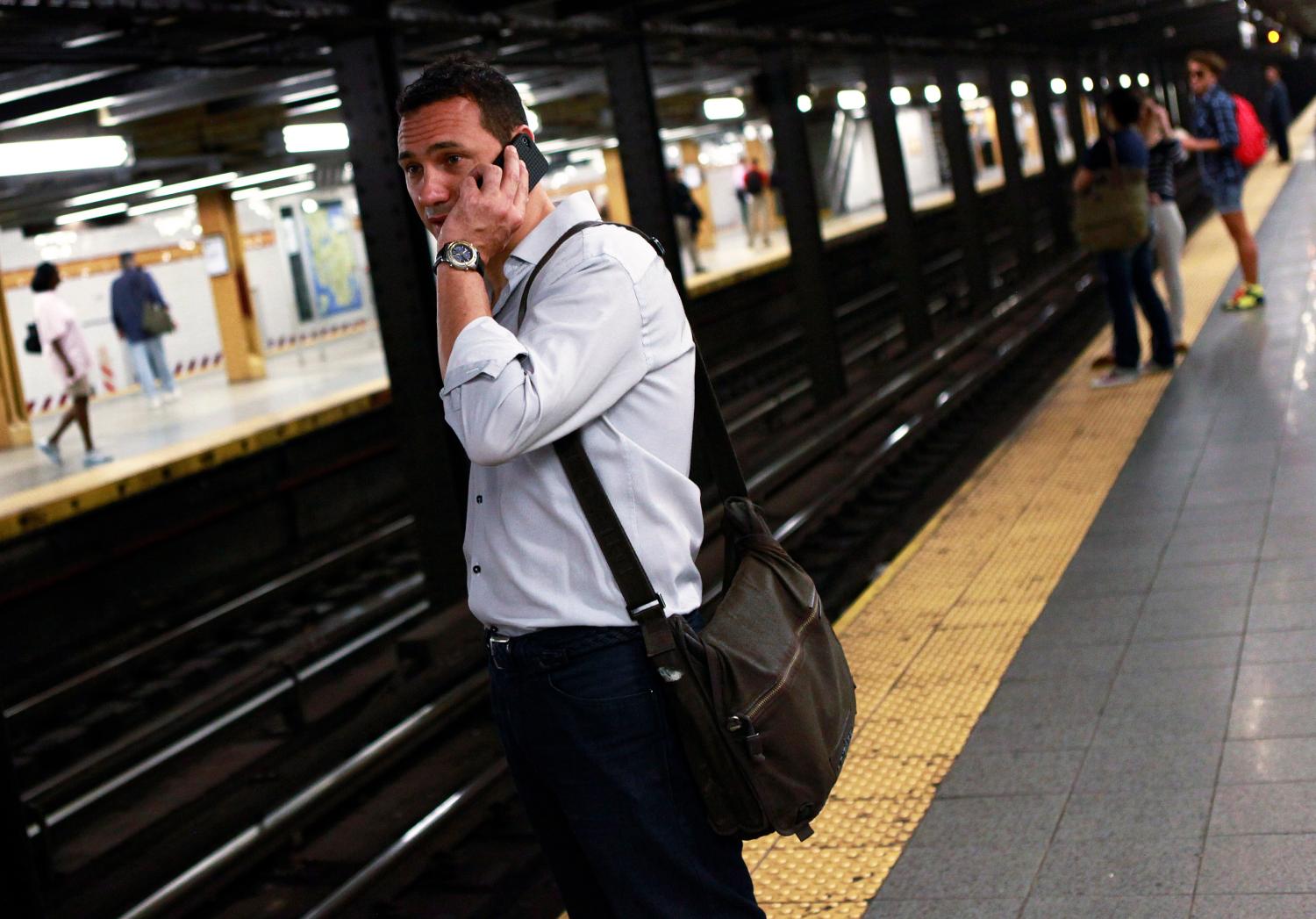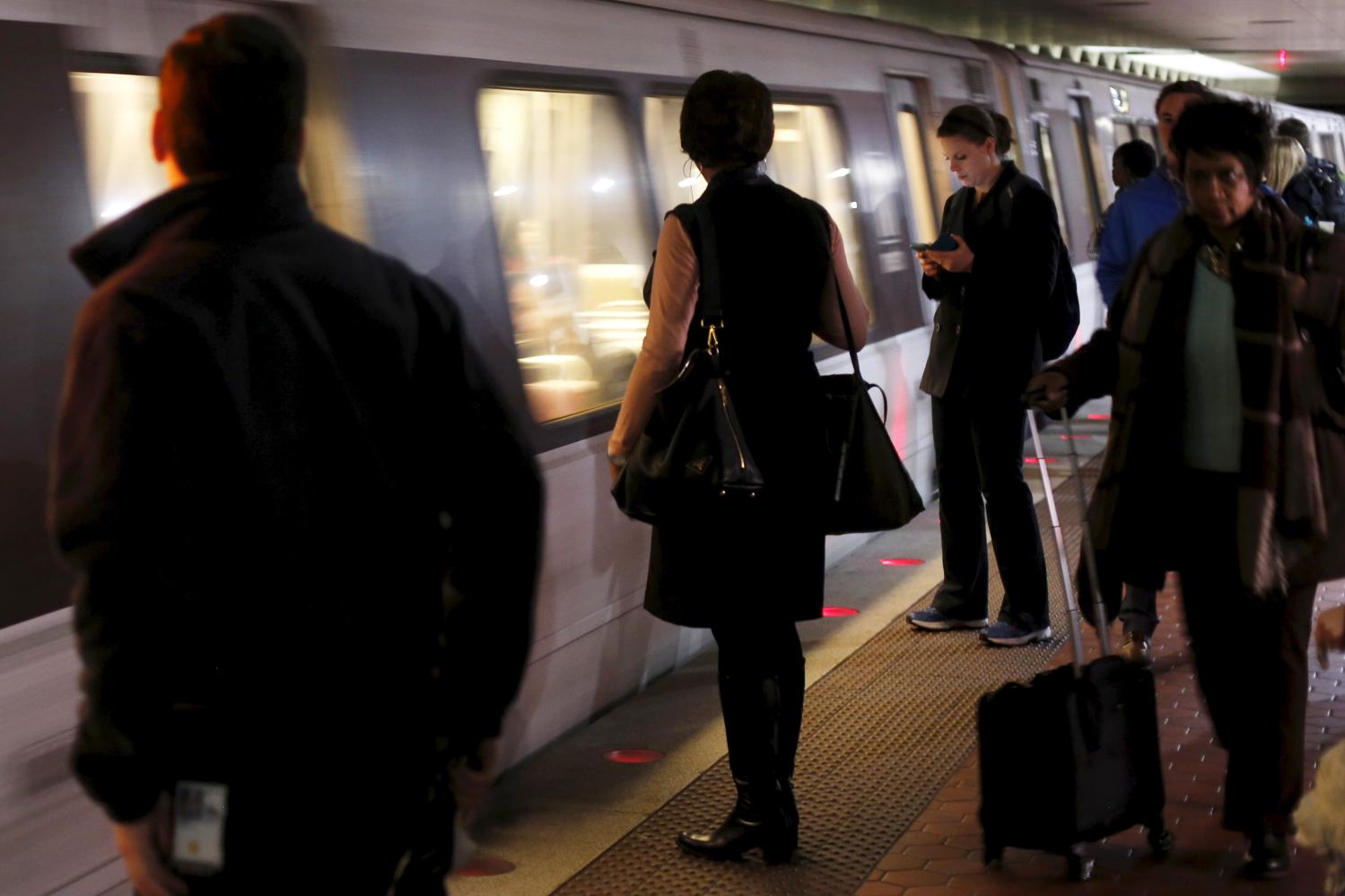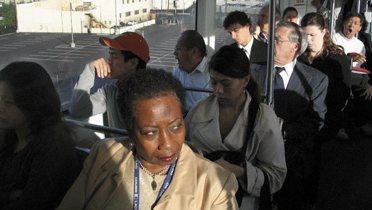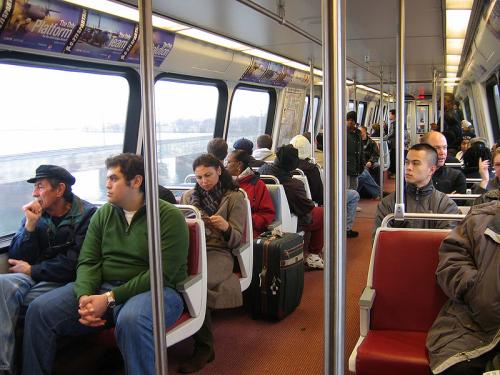The suburbanization of jobs obstructs transit’s ability to connect workers to opportunity and jobs to local labor pools.
An analysis of data from 371 transit providers in the nation’s 100 largest metropolitan areas reveals that:
Over three-quarters of all jobs in the 100 largest metropolitan areas are in neighborhoods with transit service. Western metro areas like Los Angeles and Seattle exhibit the highest coverage rates, while rates are lowest in Southern metro areas like Atlanta and Greenville. Regardless of region, city jobs across every metro area and industry category have better access to transit than their suburban counterparts.
The typical job is accessible to only about 27 percent of its metropolitan workforce by transit in 90 minutes or less. Labor access varies considerably from a high of 64 percent in metropolitan Salt Lake City to a low of 6 percent in metropolitan Palm Bay, refl ecting differences in both transit provision, job concentration, and land use patterns. City jobs are consistently accessible to larger shares of metropolitan labor pools than suburban jobs, reinforcing cities’ geographic advantage relative to transit routing.
The suburbanization of jobs obstructs transit’s ability to connect workers to opportunity and jobs to local labor pools. Fortunately, some metro areas exhibit near ubiquitous transit coverage rates and enable their jobs to access over half of their local labor pools, proving that expanded transit networks and integrated land use decisions can improve transit’s utility to employers. As metro leaders continue to grapple with limited financial resources, it is critical for transit investment decisions to simultaneously address suburban coverage gaps as well as disconnected neighborhoods. Those decisions should be made in concert with actors from other public agencies and the private sector.
Go to the profiles page for detailed statistics on your metropolitan area »
The Brookings Institution is committed to quality, independence, and impact.
We are supported by a diverse array of funders. In line with our values and policies, each Brookings publication represents the sole views of its author(s).











